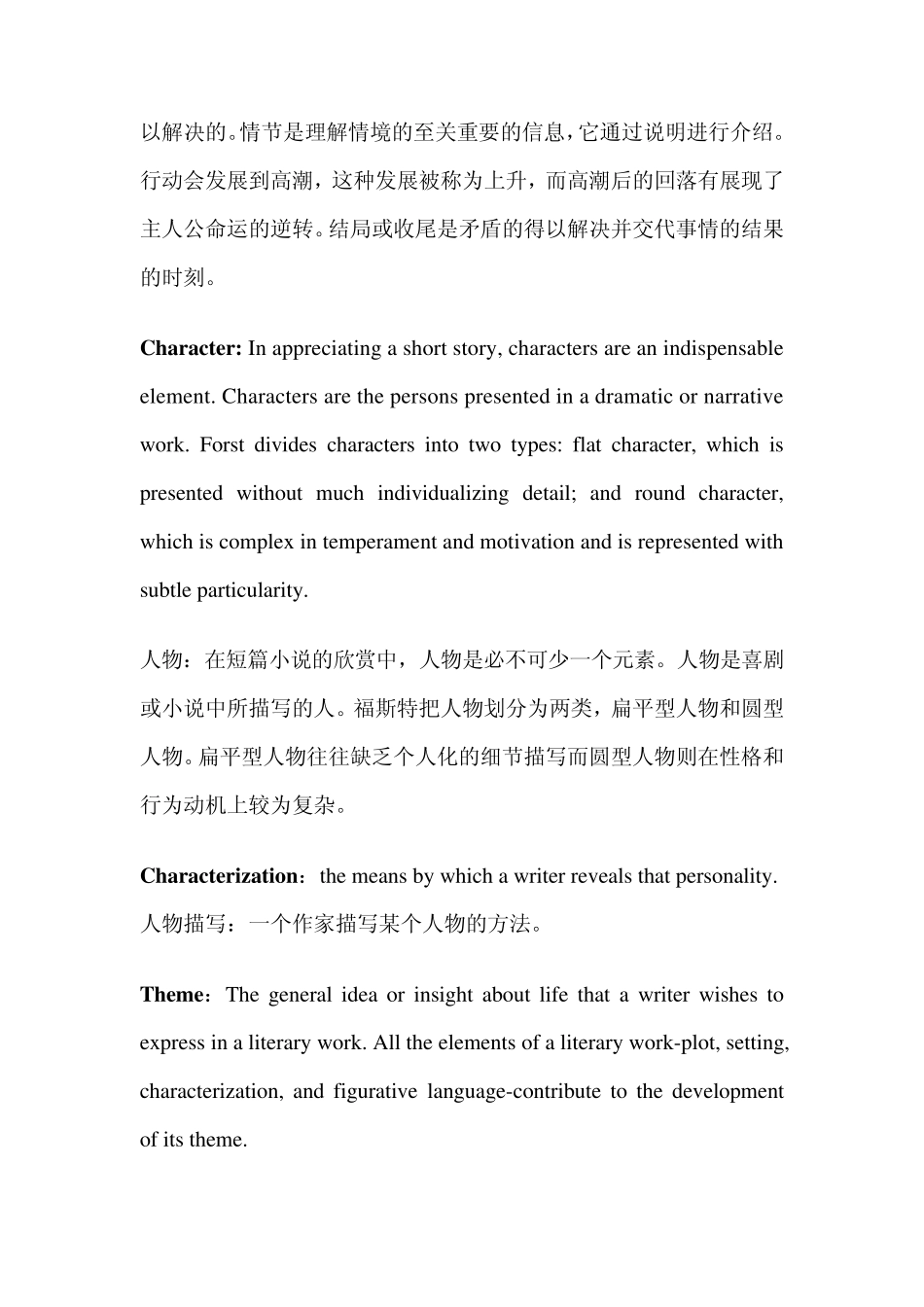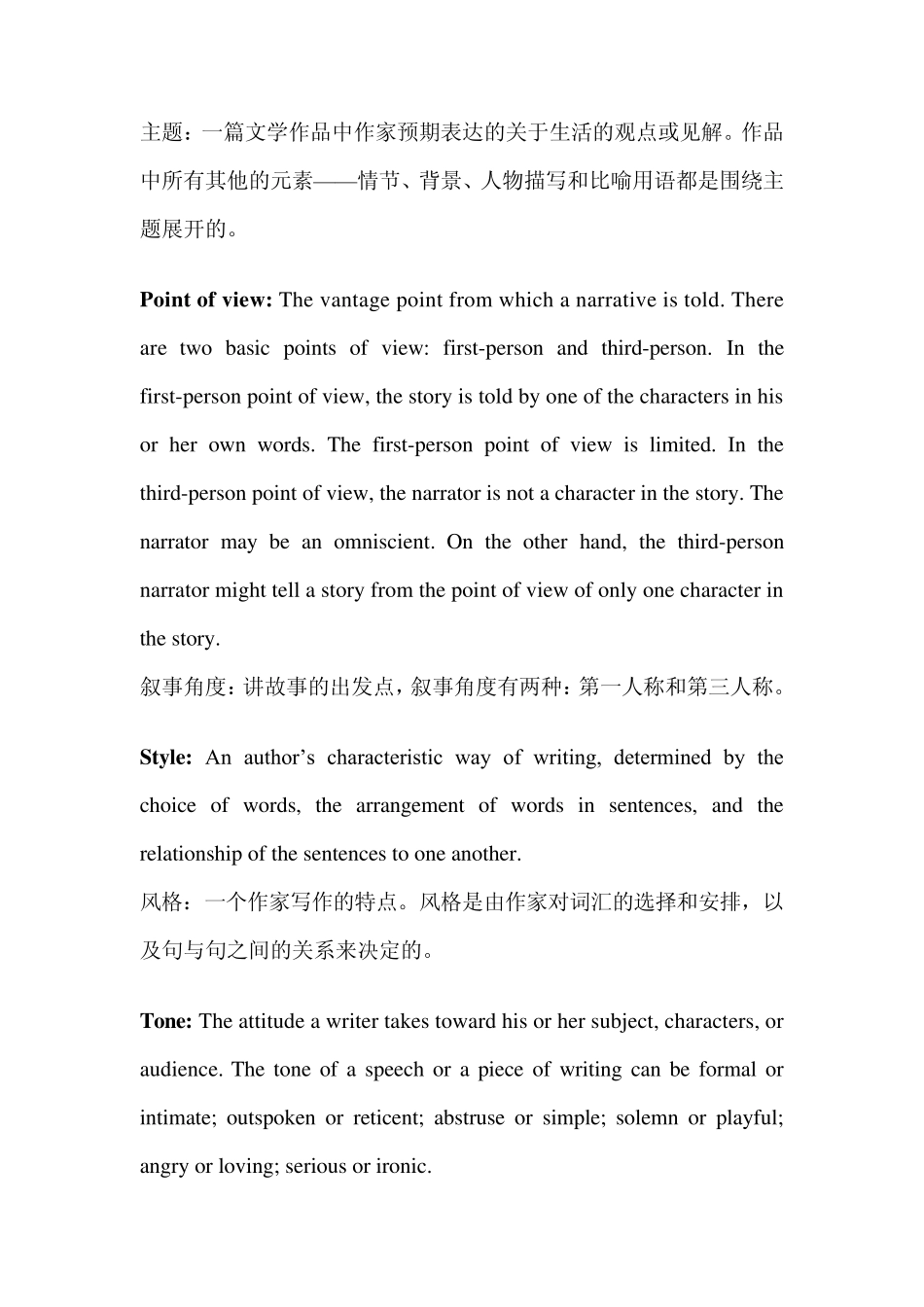Plot: Plot is the first and most obvious quality of a story. It is the sequence of events or actions in a short story, novel, play, or narrative poem. For the reader, the plot is the underlying pattern in a work of fiction, the structural element that gives it unity and order. For the writer, the plot is the guiding principle of selection and arrangement. Conflict, a struggle of some kind, is the most important element of plot. Each event in the plot is related to the conflict, the struggle that the main character undergoes. Conflict may be external or internal, and there may be more than one form of conflict in a work. As the plot advances, we learn how the conflict is resolved. Action is generally introduced by the exposition, information essential to understanding the situation. The action rises to a crisis, or climax. This movement is called the rising action. The falling action, which follows the crisis, shows a reversal of fortune for the protagonist. The denouement or resolution is the moment when the conflict ends and the outcome of the action is clear. 情节:情节是故事中最重要的元素,它是短篇小说、长篇小说、戏剧或叙事诗里面事件或行动的顺序。对于读者来说,情节是小说中最基础的部分,是赋予小说完整性和有序性的结构性元素;对于作家来说,情节是选择与安排的主导原则。矛盾(一种冲突)是情节最重要的元素。情节中的每一个事件都是和矛盾相联系的,是主要人物所以经历的斗争。矛盾可以来自内部,也可以来自外部,一部作品中也可以由多种形式的矛盾冲突。随着情节的发展,我们就能看到矛盾是如何得以解决的。情节是理解情境的至关重要的信息,它通过说明进行介绍。行动会发展到高潮,这种发展被称为上升,而高潮后的回落有展现了主人公命运的逆转。结局或收尾是矛盾的得以解决并交代事情的结果的时刻。 Character: In appreciating a short story, characters are an indispensable element. Characters are the pers...


